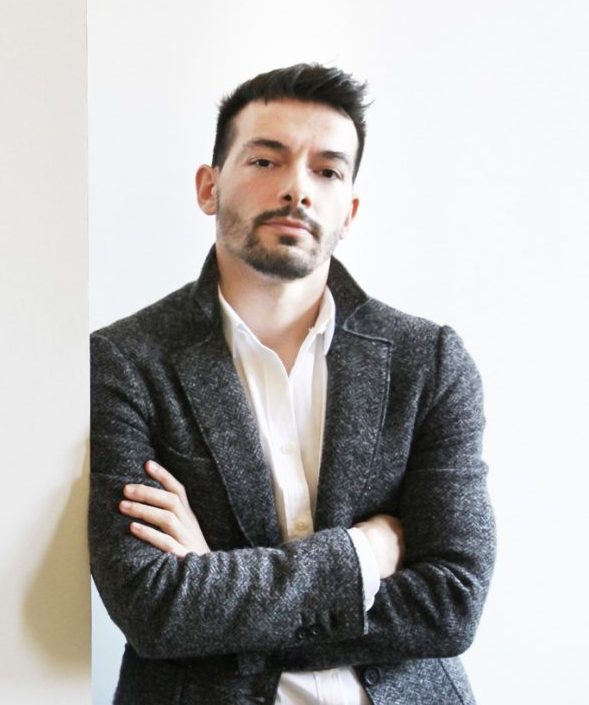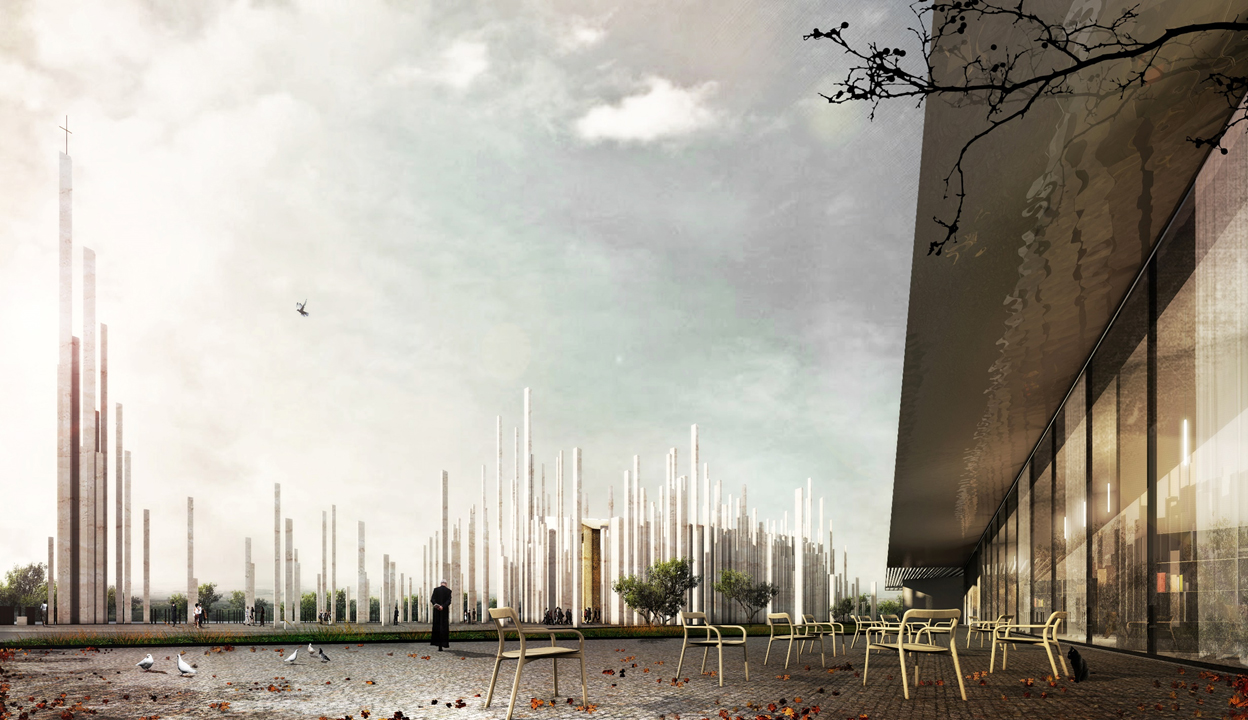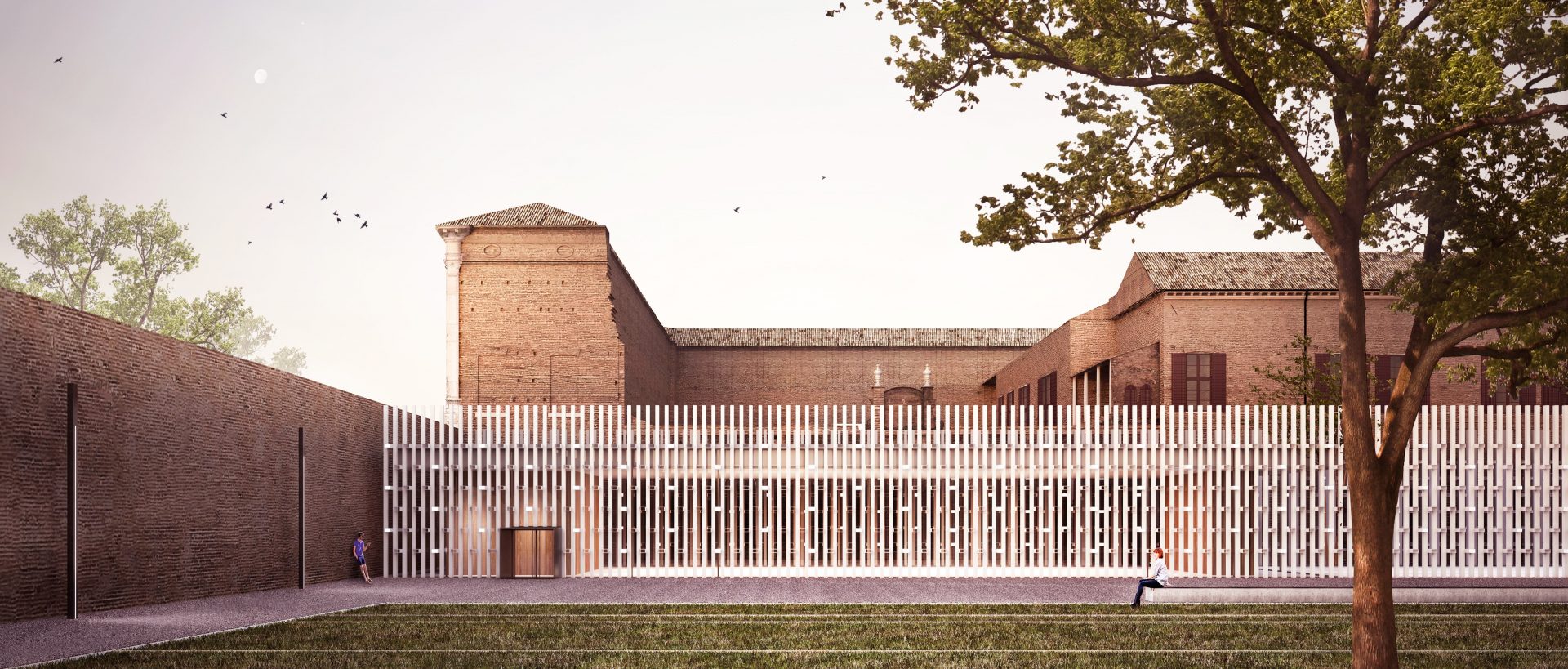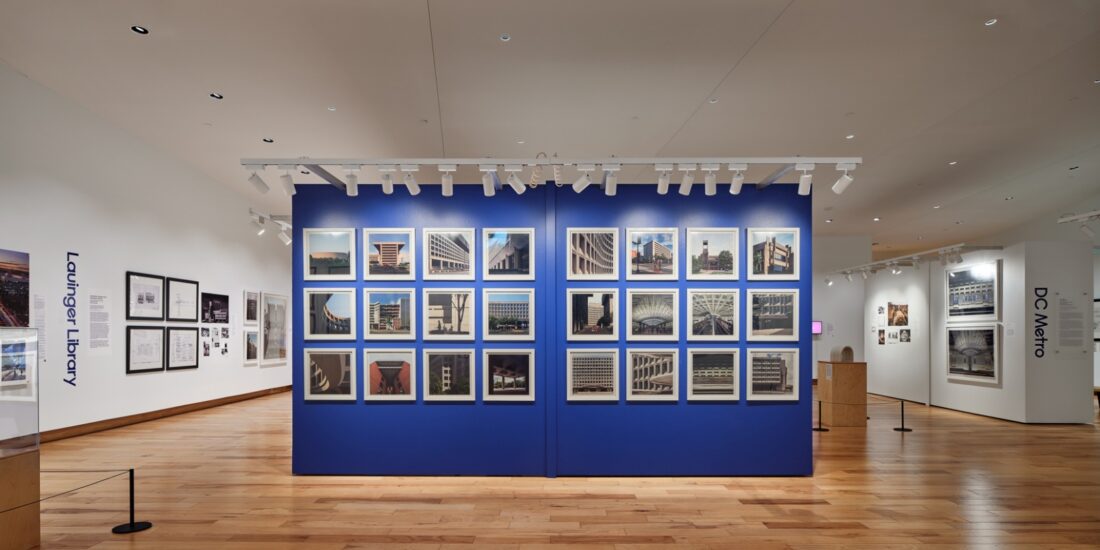“Matter Becomes the Language of Spirit”
Tomas Ghisellini is a game-changing, inspirational architect based in Ferrara, Italy, who believes that architecture is the book on which our stories, aspirations, dreams, hopes, and our most intimate needs are written. His passion for architecture is fed by his insatiable curiosity because architecture makes you feel perpetually ignorant, and according to him, the thirst to know is the only antidote to the vertigo of emptiness. By Priyal Sood.
I have always been fascinated by the possibility of accomplishing something with the bare minimum, yet with dignity, pride and power. I have always cultivated an idea of architecture intentionally frugal, richly poor, conscious, sensitive, not as efficient as effective in interpreting its relationship with the world.
Tomas Ghisellini
With an impressive Instagram page portraying minimalistic architecture and design, Tomas believes in achieving something with the bare minimum, yet with dignity, pride, and power. It is his unique vision, creativity, and experience that have inspired his peers and students.
SCALE had the opportunity to interview Tomas, and learn more about the minimalistic design concept, the importance of details to create a soothing aesthetics and the secret behind a skillfully curated Instagram profile. He tells us, “Architecture, I have always said to myself, is first and foremost the physical expression of a will, the astonishing crystallisation of thought. Matter becomes the language of spirit”.
SCALE: What made you interested in architecture? Can you tell us about your background and in numerous awards you have won till now?
My passion for architecture is from far back in time origins. I started prowling from an early age on building sites, I was about eight years old when my grandfather took me to see how things were built and how reality took shape. I was shocked by the complexity, fascinated by ingenuity, troubled by the extreme “toil” of things.
Probably in those years, I developed a natural inclination towards the possibility of physically affecting the world, to have a role in the design of the spectacle of life. Because in fact, at the end of the day, Architecture is the stage of our biographies, it is the book on which our stories, our aspirations, our dreams, our hopes, our most intimate needs are written. And probably in those very years, I sharpened one of my decisive weapons: an infinite and insatiable curiosity. Yes, because, whether you like it or not, architecture makes you feel perpetually ignorant, inadequate, not ready. The blank sheet, every time, terrifies as if it were the first time. And curiosity, the thirst to know, is the only antidote to the vertigo of emptiness.

Projects by Tomas Ghisellini Architects Atelier of Architecture: Domus Vitae, municipal funeral home micro village, Ferrara, Italy, under construction.
So, over time, I traveled, read, studied, saw, savored, new places, people, things, spaces. I have developed a personal passion for investigating the ways in which art has influenced and influences our lives today, often without our realizing it. I patiently worked out a fragile balance between design and landscape, between the form of architecture and the spirit of places, between the will for personal affirmation and collective needs.

Projects by Tomas Ghisellini Architects Atelier of Architecture: Supernova, new music school, Bressanone (Bolzano), Italy
The works of my Studio have received countless national and international awards, perhaps (at least this is what I want to believe) precisely for that character not properly conventional, far from the passing fashions, the fleeting amusements of some season, which has always characterised them. We were thrilled when they invited us to exhibit at MoMa New York. Just as when Renzo Piano, rewarding us, whispered in my ear “please keep on going like this, we need people who are able to imagine a future with strong roots”.

Projects of Tomas Ghisellini Architects Atelier of Architecture: House S, new private villa, Poggio Renatico (Ferrara), Italy, under construction

House CS, the transformation of a former cafè into an urban apartment, Copparo (Ferrara), Italy, under construction
The awards, for us, are rapid moments of happiness in which to trace the pleasure of sharing, the awareness of the recognition of hard work, the evidence of an attributed value. Moments, last the time of an emotion. Because from the very next day we go back to work, humble and strong, towards the next conquest.
Scale: A minimalist palate is seen through your designs. Can you tell us more about your design style?
I have always been fascinated by the possibility of accomplishing something with the bare minimum, yet with dignity, pride, and power. I have always cultivated an idea of architecture intentionally frugal, richly poor, conscious, sensitive, not as efficient as effective in interpreting its relationship with the world.
Cooking a tasty dish with many ingredients is quite simple or at least, so to speak, the chances of succeeding are very high. Preparing a memorable dish with very few components, on the contrary, is very difficult. Leverage is much easier than adding, limiting is much more complicated than abounding. Stripping off is a critical act, in some ways dramatic, it exposes us, makes us helpless, forces us to come to terms with the reality of the world, without any compromise, without filters, without superstructures. It forces us, we might say, to sincerity.
So, it is for architecture: designing unforgettable spaces is a daunting task, more complicated if you try to do it with the thrift and ingenuity of the multi-star chef. And this is neither a personalistic wish nor a communicative artifice. Looking back on all the architectural experiences I have been through so far, the most extraordinary and unforgettable memories have always been linked to the perception of complex simplicity, of strict essentiality, a kind of ordering principle that every time re-emerged with extraordinary strength and which was well perceptible in every little thing.
“God is in the details,” someone said. I think so too. And then we can indulge ourselves in the ecstasy of a ray of light cunningly captured, travel beyond the horizons harnessed by a wise window, find comfort in the elementary forms of maternal rooms, caress the skin of spaces built like bodies…Because after all, this is the meaning of our being in the world, if it is true, as Hölderlin reminds us, that “poetically man dwells” on this earth.
Scale: In 2009, you founded your company, The Tomas Ghisellini Architects Atelier of Architecture. Can you tell us more about this and any difficulties you encountered?
In 2008, after several experiences in Italy and around the world, I decided to follow my dream of founding a multidisciplinary Group that could devote itself to architecture and more generally to design and creative disciplines. It was about giving life to something truly innovative in the Italian academic and professional landscape, especially in relation to the desire to “(re)found” the collective consideration of our profession in the direction of a sophisticated pop image, socially engaged and no longer far from the reality of people.
I tried some design competitions, public and private, working on them at night and on weekends since at the time I was still collaborating with various design firms. For about two years I lived a life in a way “ascetic”, strongly focused, far from any distractions. It was an ardent passion for what I did to guide myself, not to make me feel fatigued, to allow me to sleep in certain cases no more than 2 hours per night. It was my unwavering will to achieve goals that nourished my tenacity. I tried some design competitions, as I told you. And I won them all. The results, often expected for a long time, came all together at last, within a few months. So, in 2009 I found myself happily “forced” to give birth to my own Studio. The time had come. And I knew how to catch it.
Basically, I do not want to talk about difficulties, because I believe that there are no real impediments for those who really want, with all of themselves, to do what they really love.
SCALE: How do you curate and maintain such an impressive Instagram page?
I think one of the secrets of my Instagram page is… patience. It is something about the ability to know when and how to wait, and the need to use time as a kind of distance from things.
I wait, and so my followers are called to do so as well. I always wait to have something really interesting to communicate, something really special, and my interlocutors know that every time (at least I like to think it is so) that wait will be worth it. In some ways, let me be light on this, it is a “revolutionary” profile because it is slow, it makes fun of speed turning it into something superfluous. After all, we all know, quality never goes along with quantity.
So, I do not post frequently, indeed. My contents are quite “rare” when compared with most contemporary profiles. I often reflect for days on the next image to be published, as if it were an epochal and irreversible choice. This happens when you realize you’re an inspiration to someone else. At that point, in fact, your choices carry with them the content of responsibility, a “burden” of respect so to speak. And I have to say it’s beautiful.
SCALE: Your Instagram page inspires people, what/who inspires your designs?
Every project comes from afar, it brings with it the adventurous image of the journey into the unknown.
A good idea is always the result of a complex and never concluded a combinatorial process between experiences, memories, inclinations, failures, ideals, technicalities, personal sensitivities. It is not easy to draw order from chaos. Thus, in front of each new project, first of all, I cultivate silence.
But you know, the power of beauty is striking. And above all irresistible. So, when almost for fun I started sharing the results or even just the creative process of my work, I discovered that I could speak to many people with the pure and immediate language of passion for what I did and that I was able to arouse in them a sense of extraordinary participation, of genuine closeness.
The moment you realize you are being an inspiration to someone else is as wonderful as it is shocking; every choice, from that point, assumes its own intimate thickness, a weight that it did not have before, it becomes “adult” in a certain way.
I like to think of contemporary media as a space where growing dreams, feeding desires, mixing knowledge, comparing ideas, opening new paths of discovery and collaboration. I am firstly seduced by the prospect of trying to do things in an alternative way, not exactly conventional, even if only by a pinch. After all, only those who set the sailing can hope to found a new world, while those who remain on the ground are condemned to live what others have decided for them.
- Loft B, historical palace home refurbishment, Ferrara, Italy
- Loft A, new contemporary home space in the old town, Padova, Italy
SCALE: Besides practicing architecture, you also teach at various universities. What are your thoughts on young talent?
My relationship with teaching is visceral, I could never help it. Ever since still being a student at the College, I accepted the task of evaluating and correcting, within various courses, the projects of my colleagues of a few years younger. I must admit it was really embarrassing at the beginning, but at the same time absolutely galvanizing, since a great deal of trust had been placed in my hands.
Shortly after graduation, I took on my first official teaching assignment. It was 2004. Since then I have never stopped and over the years I have taught in lots of Italian universities and lectured in various international institutes.
My very first lesson, for sixteen years now, always opens with these words: “Believe it or not, each of you has a great talent. Never let anyone tell you that you are worth nothing, that you cannot, that you will not succeed, that you do not have the skills. It’s all bullshit. Those who didn’t make it want you to think it’s like that. You all have a talent. Be sure of that. The real challenge is to recognize it, to identify it, to narrow it, to cultivate it, to grow it, to make it become the most precious and priceless of goods. The world needs your freshness, your energy, your skills, your dreams. We all desperately need your purity and flair. You are the only hope we have for a better world”.
Does that seem clear enough to make you understand what I think of young people’s talent?
SCALE: In the past few years, you have collaborated with famous designers, tell us about these collaborations?
It is true, over the last few years we have often collaborated with architects, designers, photographers, artists, and more generally creatives with whom we have been lucky enough to build extraordinary personal relationships and friendships before even professional links.
- House G, contemporary tower-house, Ferrara, Italy
- Babylon, urban private walled garden, Rovigo, Italy
Contrary to many of my colleagues, I think that today more than ever, pooling work is the winning strategy for the fate of our profession. It is no longer a question of confining skills within the fences of silly closures and exasperated personalism, but of creating new forms of collaboration, new methods of approaching the issues to come, contributing to the change and metamorphosis of the profession itself.
Disciplinary boundaries are blurred, changing, and undefinable every day.
The world is changing at the speed of light. Those who do not understand this simple step are going to miss the train and the opportunity to play a significant role in the future of our culture, of our cities, and, therefore, of our children’s lives.
SCALE: Do you have any upcoming projects we can look out for?
Well, so many tasty things are currently being cooked!
New collaborations will soon see the daylight, as well as special design partnerships and loads of new architecture projects, very different from each other in terms of theme, size, scale, and functional program. Among others, just to name a few, a jewel-like urban villa, a city complex for services similar to an enchanted village, a micro-living space in which nothing is as it seems and everything transforms, a new urban Italian piazza similar to an outdoor living room inhabited by trees and precious surfaces. So, you just have to stay tuned because the best is yet to come.
Short Takes
1 The city that inspires you
Rome, where “The Great Beauty” lives
2 A project that you wished you had been commissioned for
The next one, whatever it is, as long as it goes straight to my heart
3 An architect whose work is always an inspiration to you
Luigi Moretti, a silent genius
4 Your first project
A cemetery in the landscape (yes, you got it right!)
5 A project closest to your heart
A primary school, where I first experimented strive, passion and joy



















